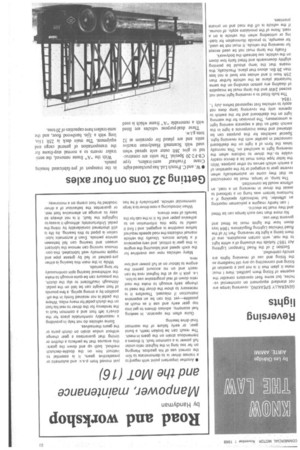Reversing lights
Page 35

If you've noticed an error in this article please click here to report it so we can fix it.
GENERALLY SPEAKING, reversing lamps are not standard equipment on commercial vehicles, but some fleet operators consider the expense of fitting them justified. Here I must make it plain that it is not just a question of fitting and connecting up any old headlamp as the fitting and use of reversing lights are strictly controlled.
Section 2 Of the Road Transport Lighting Act 1957 forbids the showing of a white light to the rear, with certain exceptions, one of them being a light for reversing. Part IV of the Road Vehicles Lighting Regulations 1964 lays down how the lights must be fitted and governs their use.
No more than two such lamps can be fitted and they must be electric.
I can hardly imagine a policeman reporting an offender, but technically speaking if a hurricane lantern was hung on a tailboard to assist the driver in reversing on a road, an offence would be committed.
The lamp, or lamps, must be constructed so that they come on automatically when reverse gear is engaged or by the operation of a switch which serves no other purpose. With the latter type there must be a device readily visible to the driver to indicate when the reversing light is switched on. This normally takes the form of a light on the dashboard connected in parallel with the reversing light. Special switches for this purpose can be obtained and these incorporate a light in the switch itself so that a separate warning light is unnecessary. The provision for the warning light on the dashboard and for the switch to operate only the reversing lamp does not apply to vehicles first registered before July 1, 1954.
The bulb fitted to a reversing light must not exceed 24W and the lamp must be incapable of dazzling any person standing on the same horizontal plane as the vehicle further than 25ft from it and whose eye level is not less than 3ft 6in. above that plane. Practically, this means that the lamp should be pointing slightly downwards and fitted fairly low down on the vehicle, say beneath the bodywork.
Finally the lamp must not be used except for reversing the vehicle. It must not be used, for example, to provide illumination for loading or unloading when the vehicle is on a. road. None of the provisions apply, of course, if the vehicle is off the road and on private premises.




































































































